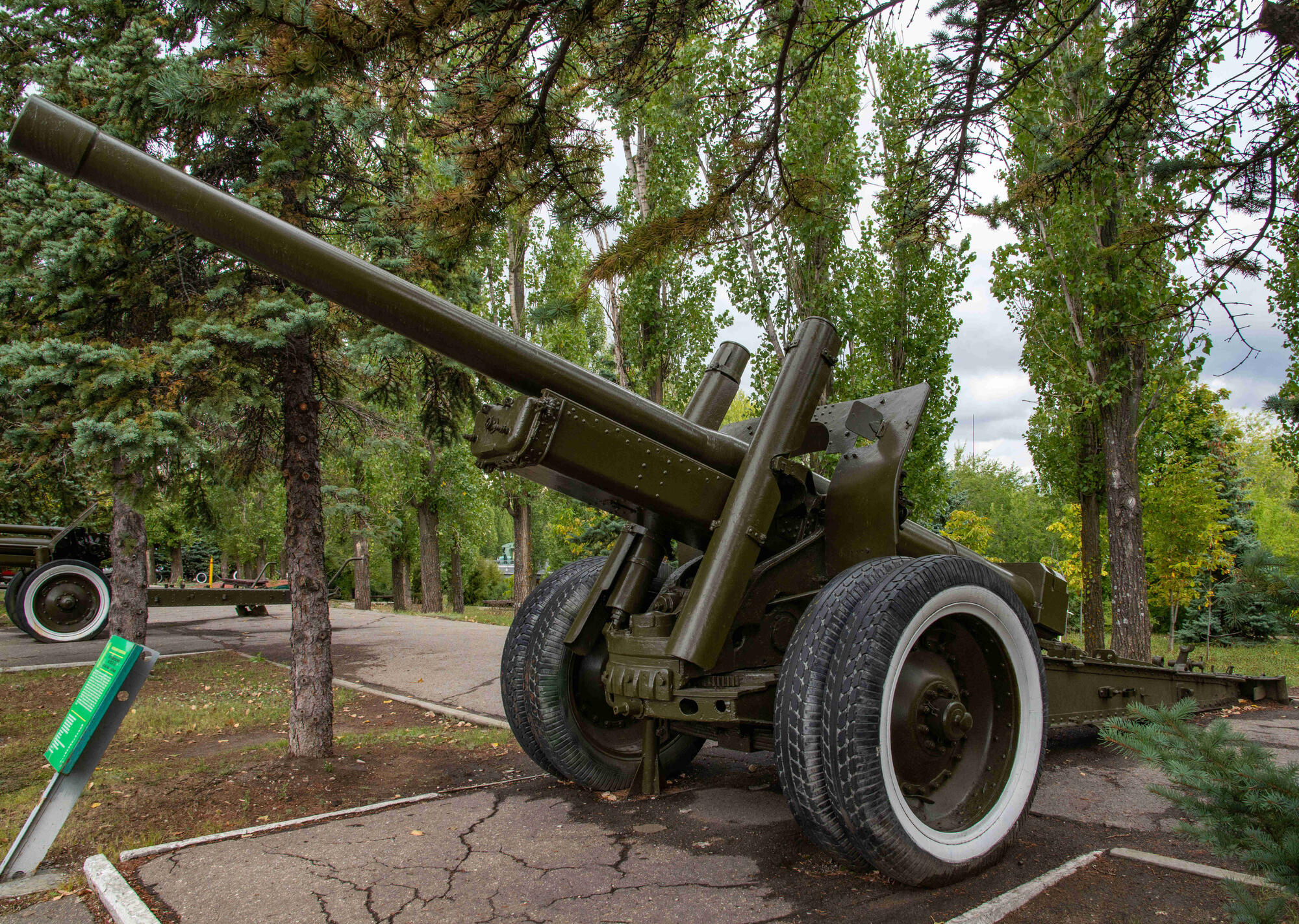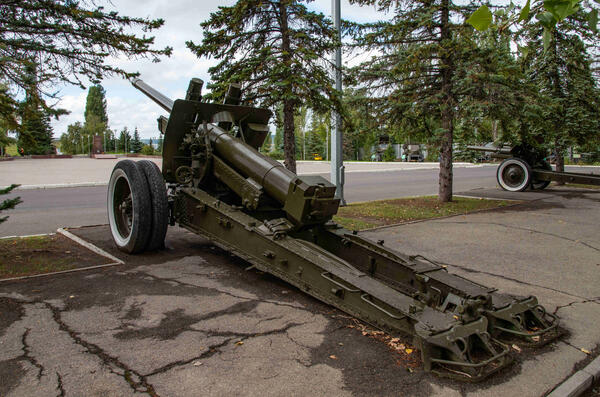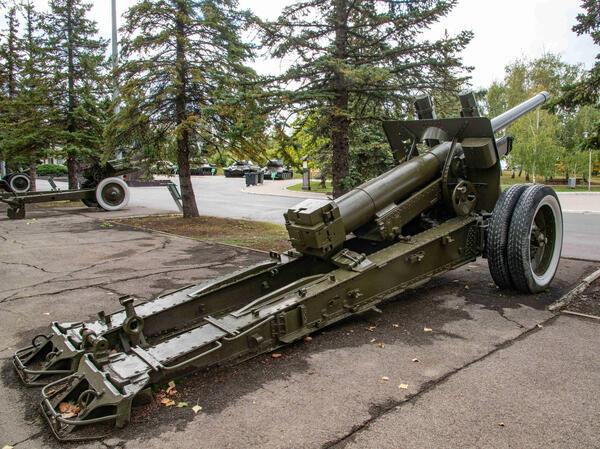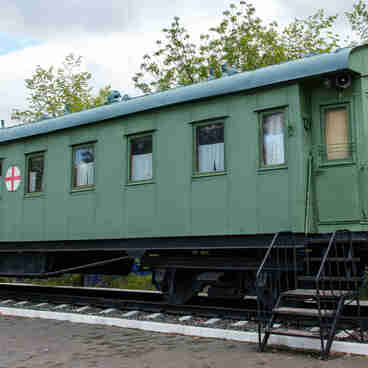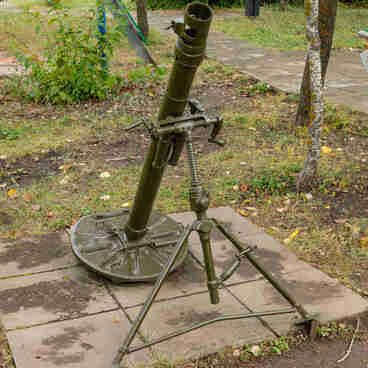The gun presented in the exhibition combined the barrel of the 122mm gun M1931 with the carriage of the 152mm gun-howitzer (ML-20). In terms of power and range of the projectile, it surpassed all others in its class. However, the gun also had some shortcomings — they were related to the design of the carriage.
Until 1937, significant changes were made in the design. They were aimed at improving the manufacturability of the gun and eliminating the shortcomings identified during operations. The modernization was carried out under the leadership of the Soviet designer Fyodor Fyodorovich Petrov.
The field tests of the new gun were successfully completed in the autumn of 1938. On April 29, 1939, it entered service with the Red Army under the designation “122mm corps gun of the 1931/37 model”. The A-19 gun designation, which was originally used with the 1931 model, was also used in the name of the new modification.
The A-19 corps gun had a classic design and consisted of a barrel with a bolt and a wheeled split trail carriage with leaf spring suspension. The barrels for the guns were produced in two variants: initially, they were of a built-up construction, and since 1937, they were replaced by barrels with a more technologically advanced looser liner. The interrupted screw breechblock was of the same design as that of the ML-20 gun-howitzer, but it was a bit smaller.
The corps guns were designed to engage clusters of enemy troops and equipment, columns on the move, artillery batteries, field warehouses, command and communication centers, and well-fortified defensive positions. When urgently necessary, for example during the operations of the Battle of Kursk in 1943, the 122mm guns were used to target heavy enemy tanks.
The ballistics of the guns allowed them to successfully engage armored vehicles. However, their use in this role was rather a gesture of desperation. As an anti-tank gun, the A-19 was too cumbersome and highly expensive, and had slow vertical and horizontal elevation mechanisms.
The A-19 and the ML-20 gun-howitzer were the bedrock of large-caliber artillery of the Red Army. It was one of the best guns in terms of accuracy and maximum firing range of the Second World War. The gun was mass-produced from 1939 to 1946. About 2.5 thousand units were manufactured.
The gun was produced at the Stalingrad “Barrikady” Factory No. 221 and the Motovilikha Machine-building Plant No. 172. After the end of World War II, the 122mm corps gun A-19 was in service with the Soviet Army and a number of other countries for a long time.
Until 1937, significant changes were made in the design. They were aimed at improving the manufacturability of the gun and eliminating the shortcomings identified during operations. The modernization was carried out under the leadership of the Soviet designer Fyodor Fyodorovich Petrov.
The field tests of the new gun were successfully completed in the autumn of 1938. On April 29, 1939, it entered service with the Red Army under the designation “122mm corps gun of the 1931/37 model”. The A-19 gun designation, which was originally used with the 1931 model, was also used in the name of the new modification.
The A-19 corps gun had a classic design and consisted of a barrel with a bolt and a wheeled split trail carriage with leaf spring suspension. The barrels for the guns were produced in two variants: initially, they were of a built-up construction, and since 1937, they were replaced by barrels with a more technologically advanced looser liner. The interrupted screw breechblock was of the same design as that of the ML-20 gun-howitzer, but it was a bit smaller.
The corps guns were designed to engage clusters of enemy troops and equipment, columns on the move, artillery batteries, field warehouses, command and communication centers, and well-fortified defensive positions. When urgently necessary, for example during the operations of the Battle of Kursk in 1943, the 122mm guns were used to target heavy enemy tanks.
The ballistics of the guns allowed them to successfully engage armored vehicles. However, their use in this role was rather a gesture of desperation. As an anti-tank gun, the A-19 was too cumbersome and highly expensive, and had slow vertical and horizontal elevation mechanisms.
The A-19 and the ML-20 gun-howitzer were the bedrock of large-caliber artillery of the Red Army. It was one of the best guns in terms of accuracy and maximum firing range of the Second World War. The gun was mass-produced from 1939 to 1946. About 2.5 thousand units were manufactured.
The gun was produced at the Stalingrad “Barrikady” Factory No. 221 and the Motovilikha Machine-building Plant No. 172. After the end of World War II, the 122mm corps gun A-19 was in service with the Soviet Army and a number of other countries for a long time.
